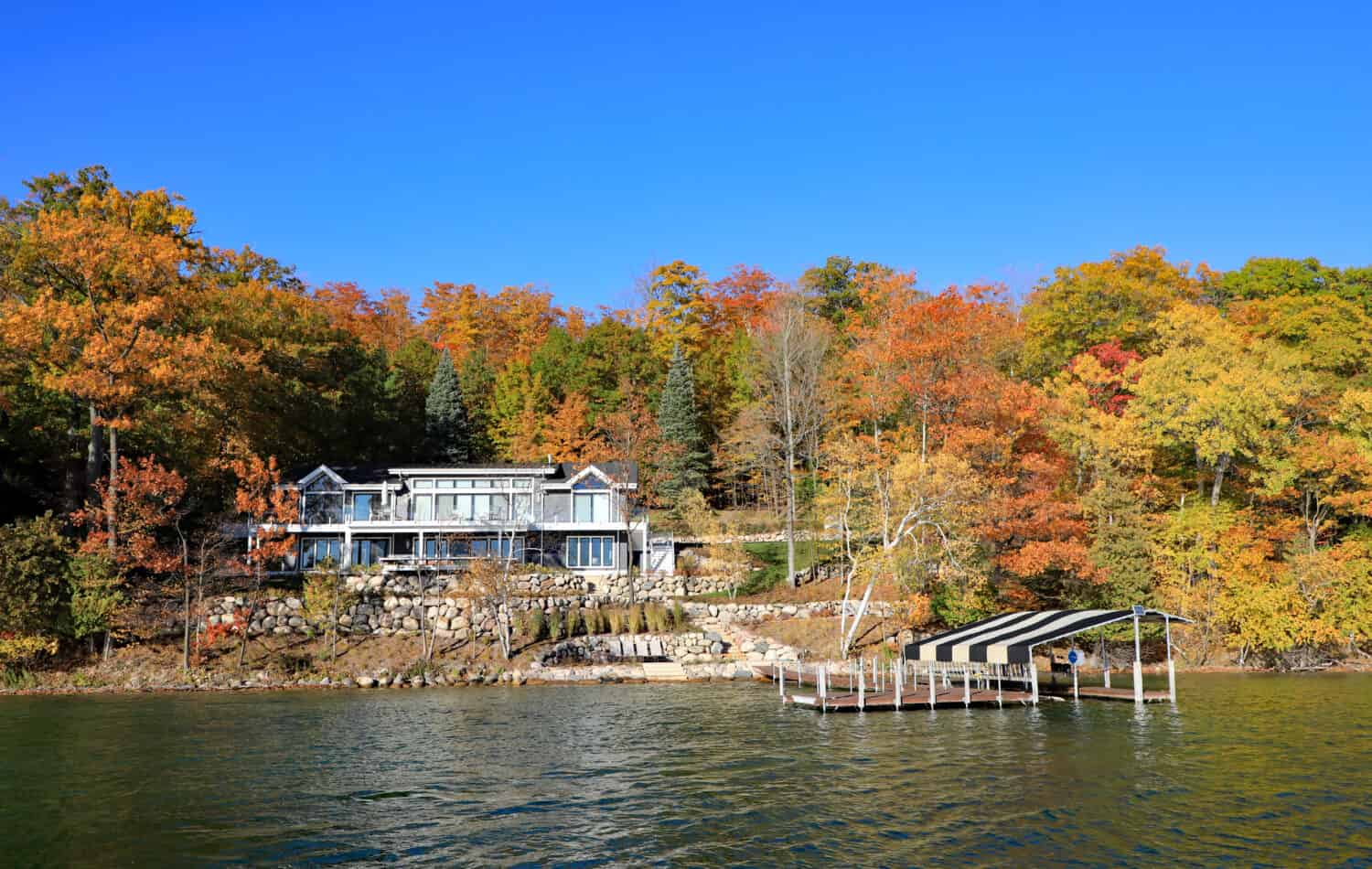Owning a home means you have undertaken some major responsibilities, specifically regarding property maintenance. While taking care of daily duties, repairs, and cosmetic obligations around the inside of your house might command the bulk of your attention, the property surrounding your home is equally as important. A well-built retaining wall can provide many essential purposes, from protecting your home from flood damage to providing a pretty, stable seating area for your guests. Whether for aesthetics or necessity, here are the top ten signs you need to install a retaining wall in your yard:
1. Signs of Soil Erosion
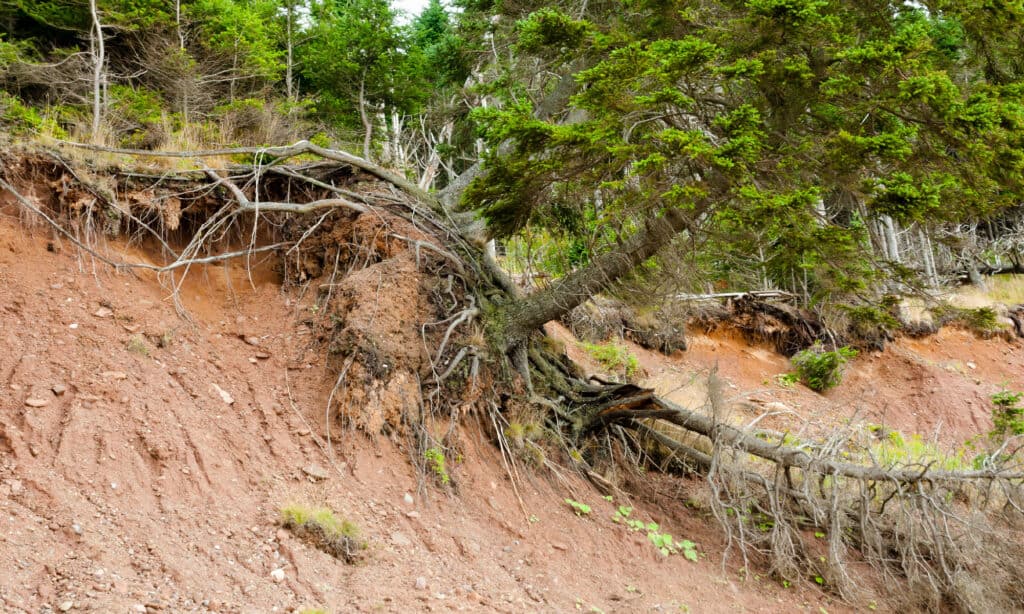
Steep slopes and heavy rain can cause severe soil erosion.
©iStock.com/Adrian Wojcik
One sign that you need a retaining wall is if you see soil erosion around the foundation of your home. You will notice erosion, which typically occurs when land is sloping away from the house by puddling water.
Rainwater will erode the soil away from the foundation, resulting in standing water. This can be incredibly damaging to the structural integrity of your home. A sturdy retaining wall can be built to keep soil in place, preventing it from eroding and effectively preventing water buildup.
2. Need to Control Rainwater
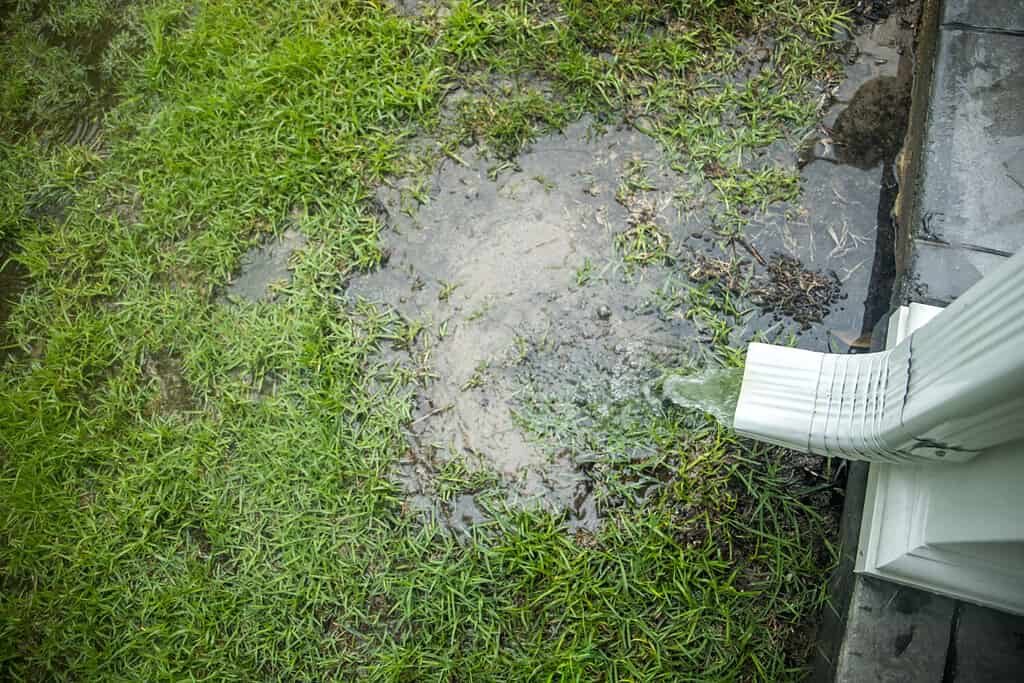
Rainwater puddles up around the base of a home and, if untreated, can cause major damage.
©Ursula Page/Shutterstock.com
A properly constructed retaining wall is designed to provide drainage and channel the water to prevent further erosion. Even if the land around your home is not necessarily sloping, you might still spot sitting water after a heavy rain. Additionally, if you have various grade changes to the land surrounding your house, rainwater can come from a slope toward your home. In the event that you see rainwater rushing toward your foundation, you could benefit greatly from a retaining wall to keep that water off your house.
3. You Need a Land Extension
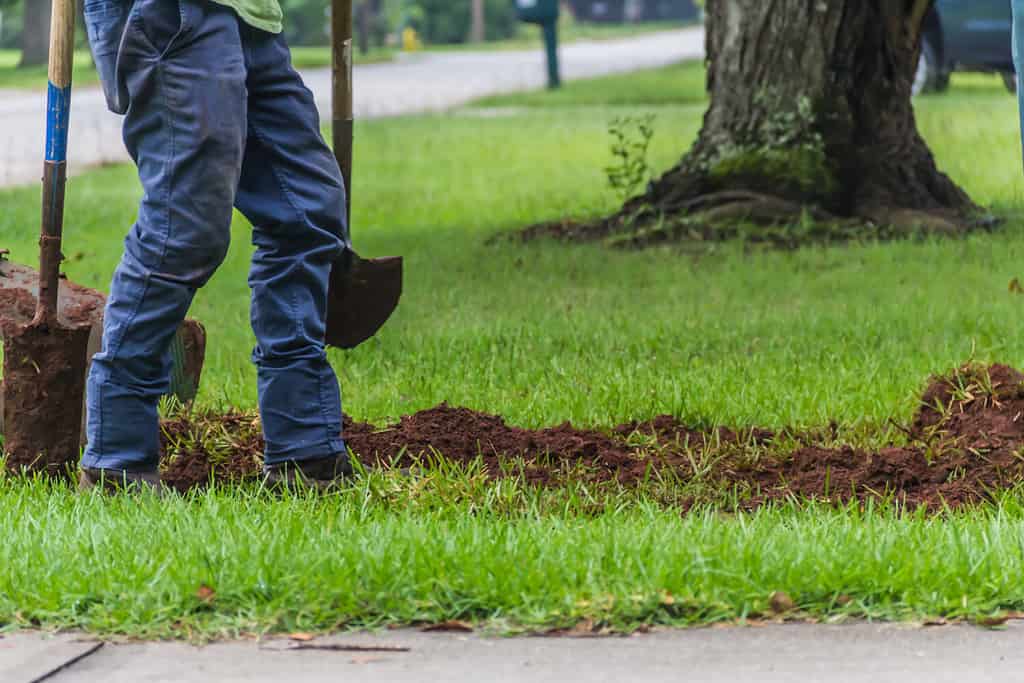
Before extending land, every retaining wall starts with digging a trench.
©Will478/Shutterstock.com
You’re standing on your balcony, porch, or stoop and notice a significant grade difference. Would you like more land before the drop-off to your backyard property line or the street? This is a sign that you could benefit from a retaining wall. Installing a retaining wall to extend the beds or lawn in the front or back of your house can raise the grade and solve your problem quickly.
4. You Live in a Flood-Prone Area

Pearl River in Jackson, MS, is prone to flooding, which can cause immense damage to unprotected homes nearby.
©Chad Robertson Media/Shutterstock.com
If you live in a flood-prone area, you will notice that your house is unprotected from high levels of water. Standing water can be notoriously damaging, causing soil erosion, mildew, mold, or rot. Constructing a retaining wall to keep the rushing water of a flood zone at bay is crucial.
5. Foundation is Cracked and Damaged

Cracked foundations are often caused by extended exposure to water and other natural elements.
©Jasmine Sahin/Shutterstock.com
As a severe point of necessity, perhaps you are not noticing standing water, but you see that your foundation is compromised. Water always finds the lowest point. Water may be causing immense damage to your foundation without your knowledge. One sign of water damage to your foundation is cracks in the concrete or warped, rotting wood around the base of your home. A well-installed retaining wall can help provide drainage, avoid erosion, and prevent water/moisture from resting against your house’s foundation.
6. You Live on Uneven Land

Hills and valleys are beautiful, but living on this type of terrain takes some extra work.
©Sundry Photography/Shutterstock.com
If you live in a dry climate, you might not notice subtle grade changes based on an influx of rainwater. No matter where you reside, however, hills and valleys — even minor ones — are everywhere. One significant sign that you could benefit from a retaining wall is if you see sharp grade changes. Retaining walls surrounding flower beds and extended land can help you even the property around your residence. As mentioned earlier, you might want a retaining wall for two reasons: either necessity or aesthetics. The final four reasons you might require a retaining wall relate to improving the appearance of your home.
7. Add Appeal to Your Property
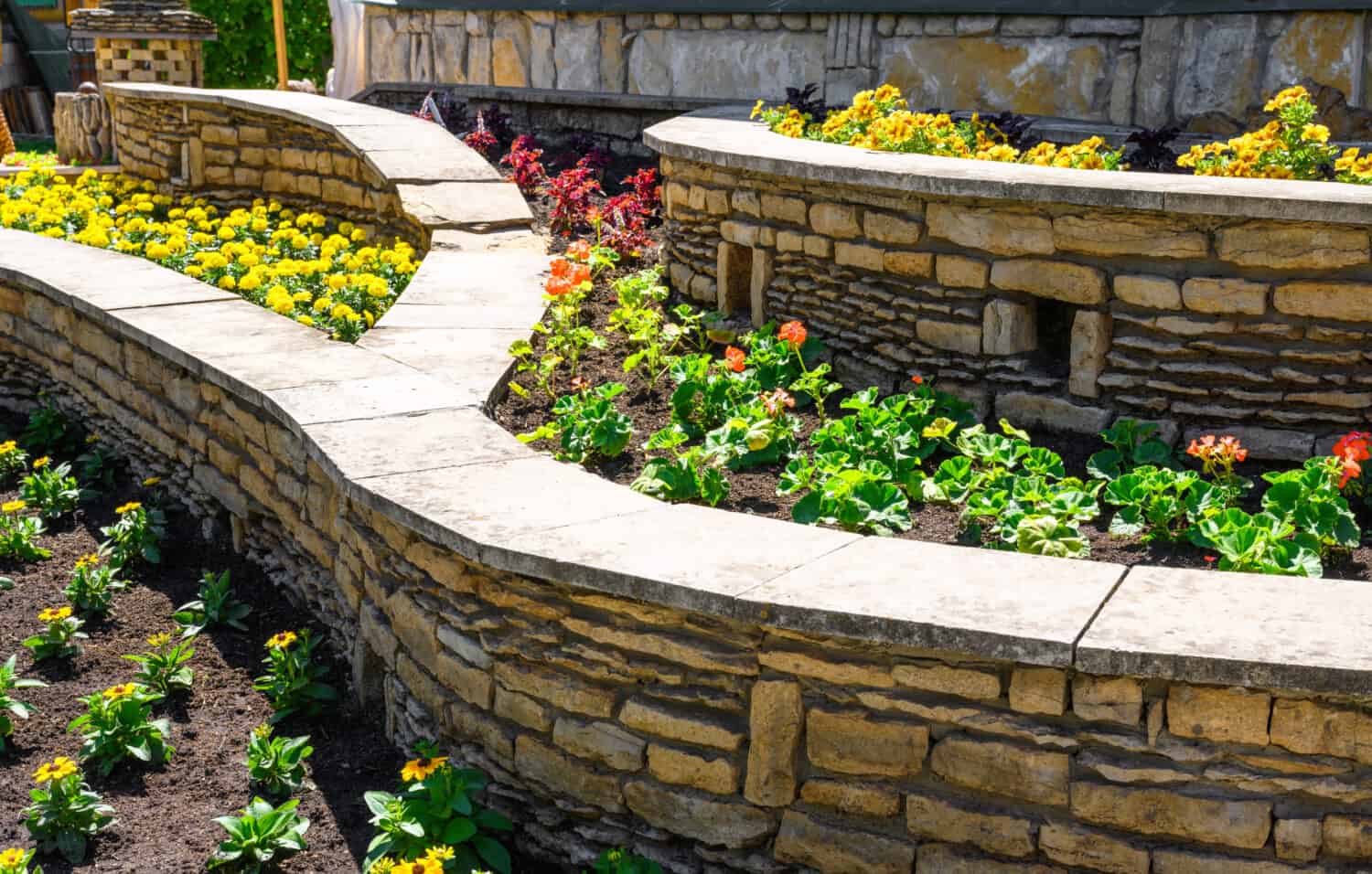
Natural stone retaining walls can provide practicality while taking your home to the next level.
©Viacheslav Lopatin/Shutterstock.com
Purely for aesthetic purposes, you might notice that a particular area of your home needs a little accent or additional presentation. You stand at the curb strip and think, “Something is missing.” This is a sign that you need some stonework to balance your yard. While adding various stone patios, steps, and pillars can lively up your living space, none of those things are accentuated without properly placed retaining walls. Whether using natural stones, such as maple creek flats, or more commercial paving stones, adding a retaining wall can bring incredible appeal to your property.
8. Replace an Aging Retaining Wall

If not properly maintained, older retaining walls will need substantial repair or replacement.
©Alexander Rybalka/Shutterstock.com
Retaining walls do a lot of work. They prevent soil erosion, flooding, and drainage, and they can level uneven property, all while providing appeal. The fact is that many homes have retaining walls for these reasonable purposes. However, stone barriers are constantly exposed to the natural elements. Rain, wind, snow, and heat can cause walls to crumble or separate at their joints as time passes. If you notice an existing wall is losing its integrity and needs more than minor repairs, then you need to install a new retaining wall.
9. Increase Your Property Value

Adding a retaining wall around your home can (slightly) increase your property value.
©Singkham/Shutterstock.com
Although it feels like it should, knowing that a simple retaining wall will not increase your property value by much is essential. While this depends on the wall’s necessity, prospective purchasers must know that retaining walls are not designed to increase value, but they can preserve it. Nevertheless, homes with fewer retaining walls, especially those in compromised areas, are generally priced lower than homes with retaining walls. Don’t expect a considerable increase. However, know that with all the practical benefits, installing one or more retaining walls is always a good decision.
10. Need Additional Seating for Your Family/Guests

While cozy, these two chairs are not enough to accommodate all of your guests.
©iStock.com/Brett Taylor
Last but not least, you look out your window as you set up for a party or other gathering and realize you do not have all the necessary seating arrangements. Figuring out all the nuances of planning a party to remember is difficult enough. You want a natural, beautiful area that effectively reshapes seating arrangements for your friends, family, and guests. It would be best to have a classy, pristine seating area. Having beautiful walls that impress your guests and provide ample structural service around your home is a no-brainer. What you need is a well-structured retaining wall that can handle all of your practical and aesthetic needs.
| Signs | |
|---|---|
| #1 | Signs of Soil Erosion |
| #2 | Need to Control Rain Water |
| #3 | You Need a Land Extension |
| #4 | You Live in a Flood Prone Area |
| #5 | Foundation is Cracked and Damaged |
| #6 | You Live on Uneven Land |
| #7 | Add Appeal to Your Property |
| #8 | Replace an Aging Retaining Wall |
| #9 | Increase Your Property Value |
| #10 | Need Additional Seating for Your Family/Guests |
Thank you for reading! Have some feedback for us? Contact the AZ Animals editorial team.

